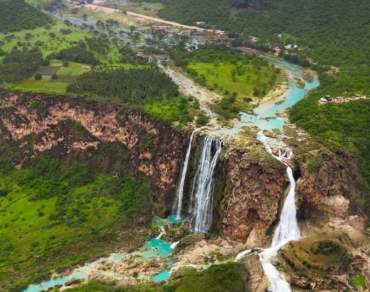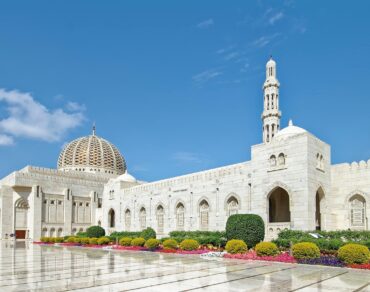
-
Oman Tour Packages > Blog > Muscat, Oman: A Historical Guide to the Jewel of the Arabian Peninsula

Muscat, Oman: A Historical Guide to the Jewel of the Arabian Peninsula
Muscat fascinated me the moment I first glimpsed its gleaming white buildings nestled between rugged mountains and the azure Arabian Sea. This magnificent city stands at the intersection of ancient trade routes and modern prosperity.
Muscat Oman History, spans over 3,000 years. Tales of maritime empires, Portuguese colonists, and Omani sultans have shaped this strategic harbor into one of the Arabian Peninsula’s most intriguing cities. The historic port’s evolution tells a story of cultural preservation and growth.
This piece traces Muscat’s remarkable path from its early settlement through the golden age of Omani maritime power to its modern renaissance under Sultan Qaboos. The city’s ability to preserve its historical charm while embracing contemporary development makes it truly unique.
Ancient Maritime Legacy
My visit to Muscat revealed a rich maritime legacy hidden beneath its modern exterior. The city’s seafaring story dates back to the 3rd millennium BC. Ancient mariners saw the incredible value of its natural harbors.
Early Settlement and Trade Routes
The view from Muscat’s corniche brings to life images of trading vessels that once ruled these waters. The city became a natural hub for maritime commerce because of its perfect location. Trade routes connected the Silk Road to the Maritime Spice Routes. Omani merchants traded valuable goods:
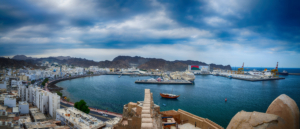 Portuguese Colonial Period
Portuguese forces arrived in 1507 and changed Muscat’s path forever. Commander Afonso de Albuquerque took control of this vital port. The impressive fortifications his forces built still guard the harbor today. Their control lasted until 1650, and Muscat served as a key logistics hub for Portuguese armadas in the Persian Gulf.
Strategic Importance in Indian Ocean Trade
Muscat’s influence reached way beyond its shores. Omani vessels sailed regularly to China’s port of Quanzhou by the 9th century. These trade connections lasted for hundreds of years. The city’s position at the Persian Gulf’s entrance made it crucial for Indian Ocean merchants.
Muscat’s port was more than a trading post – it became a place where cultures joined together. Arab, Persian, Indian, and African traders shaped the city’s character. Their influence shows in modern Muscat’s architecture, cuisine, and traditions, creating an array of cultural elements that still exist today.
Rise of the Sultanate
The narrow streets of old Muscat tell stories of the Al Bu Said dynasty. Each step I take reminds me of their legacy that changed the city’s destiny forever.
Establishment of the Al Bu Said Dynasty
Ahmad bin Said proved himself to be a brilliant military strategist in 1749. He drove Persian forces out of Muscat, and people elected him as imam. This marked the start of Oman’s longest-ruling dynasty. The city changed from a disputed port into the heart of a rising maritime power.
Golden Age of the Omani Maritime Empire
Said bin Sultan’s remarkable reign (1806-1856) took Muscat to new heights as a commercial powerhouse. The empire achieved amazing things during this time:
Portuguese Colonial Period
Portuguese forces arrived in 1507 and changed Muscat’s path forever. Commander Afonso de Albuquerque took control of this vital port. The impressive fortifications his forces built still guard the harbor today. Their control lasted until 1650, and Muscat served as a key logistics hub for Portuguese armadas in the Persian Gulf.
Strategic Importance in Indian Ocean Trade
Muscat’s influence reached way beyond its shores. Omani vessels sailed regularly to China’s port of Quanzhou by the 9th century. These trade connections lasted for hundreds of years. The city’s position at the Persian Gulf’s entrance made it crucial for Indian Ocean merchants.
Muscat’s port was more than a trading post – it became a place where cultures joined together. Arab, Persian, Indian, and African traders shaped the city’s character. Their influence shows in modern Muscat’s architecture, cuisine, and traditions, creating an array of cultural elements that still exist today.
Rise of the Sultanate
The narrow streets of old Muscat tell stories of the Al Bu Said dynasty. Each step I take reminds me of their legacy that changed the city’s destiny forever.
Establishment of the Al Bu Said Dynasty
Ahmad bin Said proved himself to be a brilliant military strategist in 1749. He drove Persian forces out of Muscat, and people elected him as imam. This marked the start of Oman’s longest-ruling dynasty. The city changed from a disputed port into the heart of a rising maritime power.
Golden Age of the Omani Maritime Empire
Said bin Sultan’s remarkable reign (1806-1856) took Muscat to new heights as a commercial powerhouse. The empire achieved amazing things during this time:
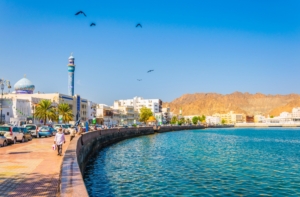 Sultan Qaboos’s Renaissance
Sultan Qaboos transformed an isolated nation into a modern state, which amazed me as I learned about Muscat’s journey. His leadership united the country by ending civil conflicts first. The city expanded to nearly six times its original size under his vision. Muscat became a symbol of peaceful development throughout the region.
Economic Development and Modernization
Muscat’s development stands out remarkably. The city has evolved through successive five-year plans since 1976. My observations reveal these changes:
Sultan Qaboos’s Renaissance
Sultan Qaboos transformed an isolated nation into a modern state, which amazed me as I learned about Muscat’s journey. His leadership united the country by ending civil conflicts first. The city expanded to nearly six times its original size under his vision. Muscat became a symbol of peaceful development throughout the region.
Economic Development and Modernization
Muscat’s development stands out remarkably. The city has evolved through successive five-year plans since 1976. My observations reveal these changes:
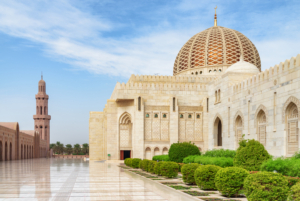 Conclusion
My experience in Muscat shows a city that perfectly balances its ancient maritime heritage with modern sophistication. Muscat Oman History proves that progress can coexist with cultural identity.
The city’s evolution captivates me. It transformed from an ancient trading post into a Portuguese stronghold, then reached the golden age of Omani maritime power, and now stands as a thriving modern capital. Sultan Qaboos’s renaissance era brought incredible development that preserved the city’s essence.
The streets of Muscat demonstrate how careful urban planning and strict preservation laws protect its character. The city stands apart from its Gulf neighbors by maintaining its architectural heritage through low-rise buildings and traditional designs. Muscat’s successful integration of progress and tradition teaches valuable lessons to other developing capitals.
This jewel of the Arabian Peninsula will keep shining brightly. It gives visitors and residents a unique view of how a city can build its future while celebrating its past. Travel back in time and uncover the rich history of Muscat, where every stone has a story to tell. Book now!
Conclusion
My experience in Muscat shows a city that perfectly balances its ancient maritime heritage with modern sophistication. Muscat Oman History proves that progress can coexist with cultural identity.
The city’s evolution captivates me. It transformed from an ancient trading post into a Portuguese stronghold, then reached the golden age of Omani maritime power, and now stands as a thriving modern capital. Sultan Qaboos’s renaissance era brought incredible development that preserved the city’s essence.
The streets of Muscat demonstrate how careful urban planning and strict preservation laws protect its character. The city stands apart from its Gulf neighbors by maintaining its architectural heritage through low-rise buildings and traditional designs. Muscat’s successful integration of progress and tradition teaches valuable lessons to other developing capitals.
This jewel of the Arabian Peninsula will keep shining brightly. It gives visitors and residents a unique view of how a city can build its future while celebrating its past. Travel back in time and uncover the rich history of Muscat, where every stone has a story to tell. Book now!
- Precious frankincense and myrrh
- Arabian horses are prized worldwide
- Dates, copper, and dried fish
- Exotic spices from distant lands
 Portuguese Colonial Period
Portuguese forces arrived in 1507 and changed Muscat’s path forever. Commander Afonso de Albuquerque took control of this vital port. The impressive fortifications his forces built still guard the harbor today. Their control lasted until 1650, and Muscat served as a key logistics hub for Portuguese armadas in the Persian Gulf.
Strategic Importance in Indian Ocean Trade
Muscat’s influence reached way beyond its shores. Omani vessels sailed regularly to China’s port of Quanzhou by the 9th century. These trade connections lasted for hundreds of years. The city’s position at the Persian Gulf’s entrance made it crucial for Indian Ocean merchants.
Muscat’s port was more than a trading post – it became a place where cultures joined together. Arab, Persian, Indian, and African traders shaped the city’s character. Their influence shows in modern Muscat’s architecture, cuisine, and traditions, creating an array of cultural elements that still exist today.
Rise of the Sultanate
The narrow streets of old Muscat tell stories of the Al Bu Said dynasty. Each step I take reminds me of their legacy that changed the city’s destiny forever.
Establishment of the Al Bu Said Dynasty
Ahmad bin Said proved himself to be a brilliant military strategist in 1749. He drove Persian forces out of Muscat, and people elected him as imam. This marked the start of Oman’s longest-ruling dynasty. The city changed from a disputed port into the heart of a rising maritime power.
Golden Age of the Omani Maritime Empire
Said bin Sultan’s remarkable reign (1806-1856) took Muscat to new heights as a commercial powerhouse. The empire achieved amazing things during this time:
Portuguese Colonial Period
Portuguese forces arrived in 1507 and changed Muscat’s path forever. Commander Afonso de Albuquerque took control of this vital port. The impressive fortifications his forces built still guard the harbor today. Their control lasted until 1650, and Muscat served as a key logistics hub for Portuguese armadas in the Persian Gulf.
Strategic Importance in Indian Ocean Trade
Muscat’s influence reached way beyond its shores. Omani vessels sailed regularly to China’s port of Quanzhou by the 9th century. These trade connections lasted for hundreds of years. The city’s position at the Persian Gulf’s entrance made it crucial for Indian Ocean merchants.
Muscat’s port was more than a trading post – it became a place where cultures joined together. Arab, Persian, Indian, and African traders shaped the city’s character. Their influence shows in modern Muscat’s architecture, cuisine, and traditions, creating an array of cultural elements that still exist today.
Rise of the Sultanate
The narrow streets of old Muscat tell stories of the Al Bu Said dynasty. Each step I take reminds me of their legacy that changed the city’s destiny forever.
Establishment of the Al Bu Said Dynasty
Ahmad bin Said proved himself to be a brilliant military strategist in 1749. He drove Persian forces out of Muscat, and people elected him as imam. This marked the start of Oman’s longest-ruling dynasty. The city changed from a disputed port into the heart of a rising maritime power.
Golden Age of the Omani Maritime Empire
Said bin Sultan’s remarkable reign (1806-1856) took Muscat to new heights as a commercial powerhouse. The empire achieved amazing things during this time:
- Control of strategic ports from Mombasa to Gwadar
- Establishment of Zanzibar as a second capital
- Development of the world’s most powerful naval force after Britain
- Creation of extensive trade networks reaching China
- 1798: First treaty expressing “friendship until the end of time”
- 1800: Agreement for British East India Company presence
- 1862: Anglo-French recognition of the Sultanate’s independence
 Sultan Qaboos’s Renaissance
Sultan Qaboos transformed an isolated nation into a modern state, which amazed me as I learned about Muscat’s journey. His leadership united the country by ending civil conflicts first. The city expanded to nearly six times its original size under his vision. Muscat became a symbol of peaceful development throughout the region.
Economic Development and Modernization
Muscat’s development stands out remarkably. The city has evolved through successive five-year plans since 1976. My observations reveal these changes:
Sultan Qaboos’s Renaissance
Sultan Qaboos transformed an isolated nation into a modern state, which amazed me as I learned about Muscat’s journey. His leadership united the country by ending civil conflicts first. The city expanded to nearly six times its original size under his vision. Muscat became a symbol of peaceful development throughout the region.
Economic Development and Modernization
Muscat’s development stands out remarkably. The city has evolved through successive five-year plans since 1976. My observations reveal these changes:
- Reliable networks
- World-class healthcare facilities
- Advanced educational institutions
- Expanded transportation systems
- Strategic industrial zones
- Traditional coffee ceremonies with kahwa and dates
- Family gatherings during religious festivals
- Modern social clubs that cater to various interests
- International cultural events at the Royal Opera House
 Conclusion
My experience in Muscat shows a city that perfectly balances its ancient maritime heritage with modern sophistication. Muscat Oman History proves that progress can coexist with cultural identity.
The city’s evolution captivates me. It transformed from an ancient trading post into a Portuguese stronghold, then reached the golden age of Omani maritime power, and now stands as a thriving modern capital. Sultan Qaboos’s renaissance era brought incredible development that preserved the city’s essence.
The streets of Muscat demonstrate how careful urban planning and strict preservation laws protect its character. The city stands apart from its Gulf neighbors by maintaining its architectural heritage through low-rise buildings and traditional designs. Muscat’s successful integration of progress and tradition teaches valuable lessons to other developing capitals.
This jewel of the Arabian Peninsula will keep shining brightly. It gives visitors and residents a unique view of how a city can build its future while celebrating its past. Travel back in time and uncover the rich history of Muscat, where every stone has a story to tell. Book now!
Conclusion
My experience in Muscat shows a city that perfectly balances its ancient maritime heritage with modern sophistication. Muscat Oman History proves that progress can coexist with cultural identity.
The city’s evolution captivates me. It transformed from an ancient trading post into a Portuguese stronghold, then reached the golden age of Omani maritime power, and now stands as a thriving modern capital. Sultan Qaboos’s renaissance era brought incredible development that preserved the city’s essence.
The streets of Muscat demonstrate how careful urban planning and strict preservation laws protect its character. The city stands apart from its Gulf neighbors by maintaining its architectural heritage through low-rise buildings and traditional designs. Muscat’s successful integration of progress and tradition teaches valuable lessons to other developing capitals.
This jewel of the Arabian Peninsula will keep shining brightly. It gives visitors and residents a unique view of how a city can build its future while celebrating its past. Travel back in time and uncover the rich history of Muscat, where every stone has a story to tell. Book now! Related Tours
Related Tours
Test2
© 2025 Oman Tour Packages. All rights reserved.
